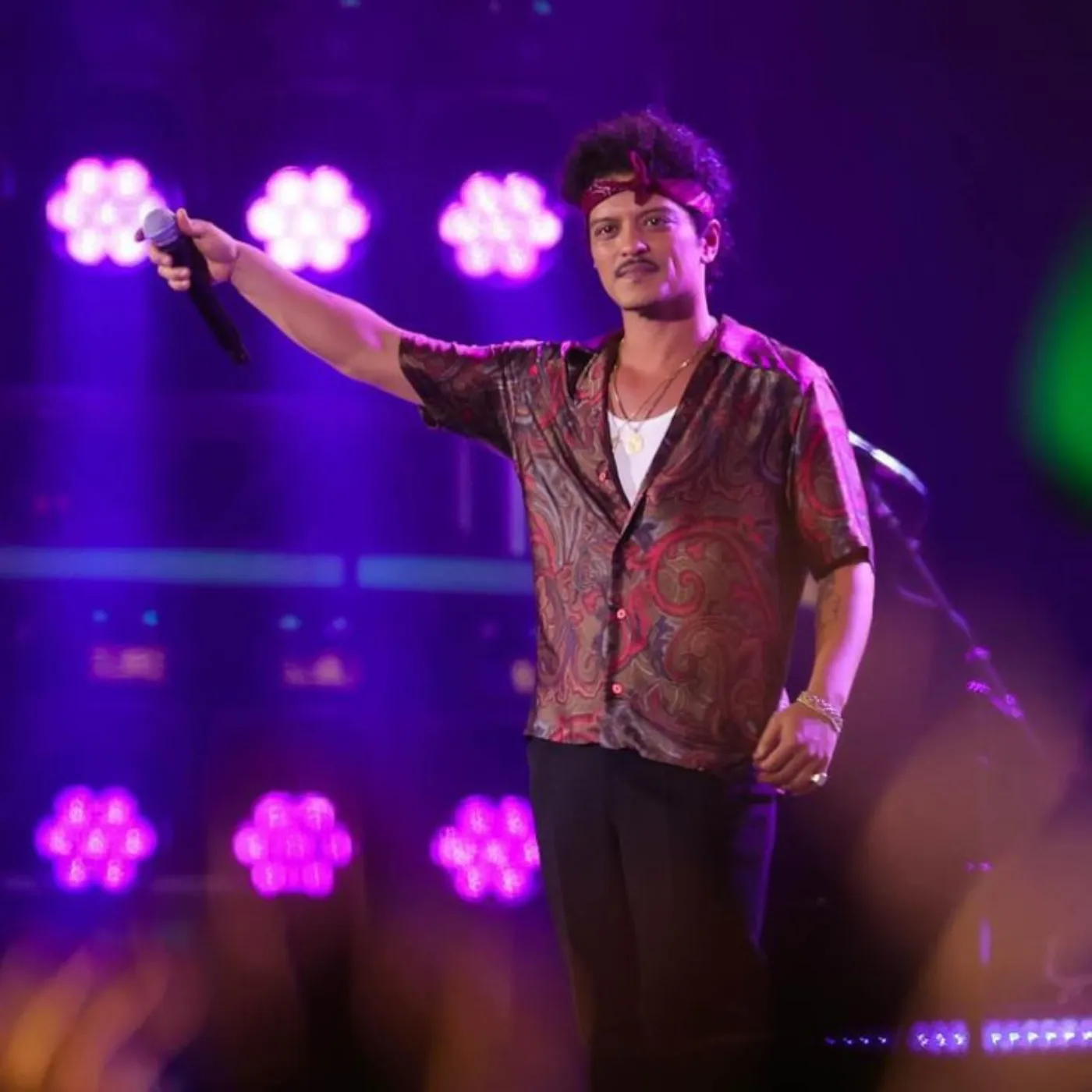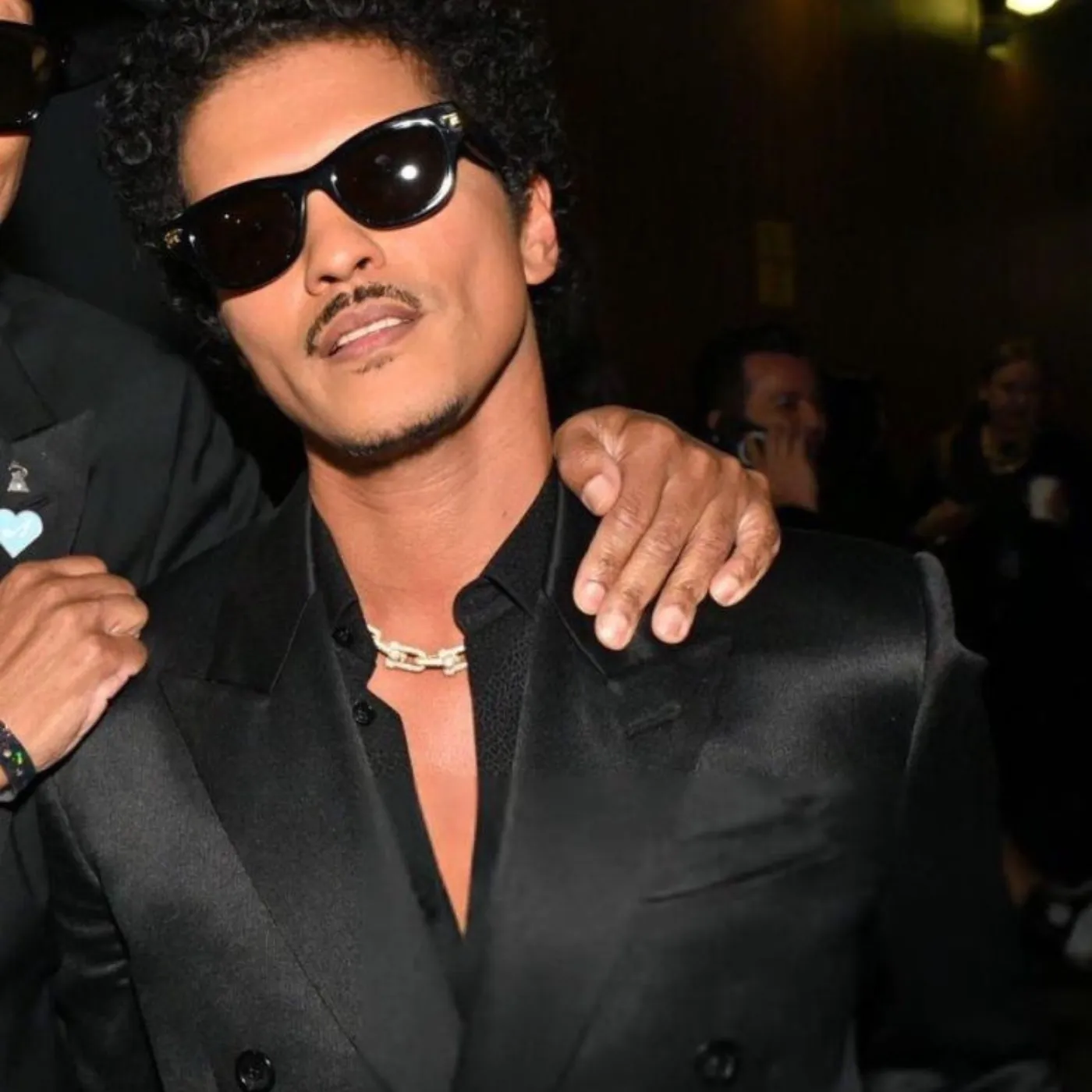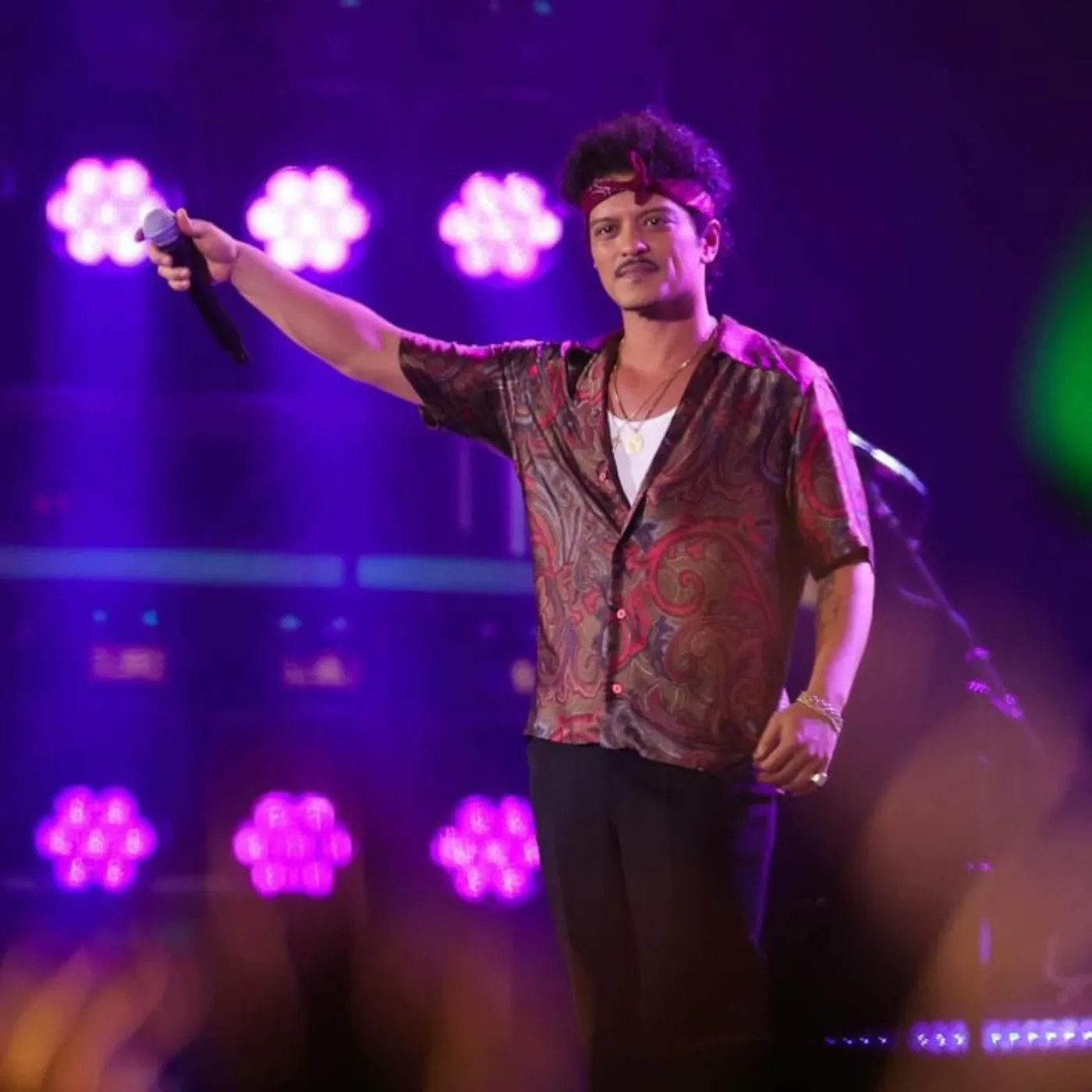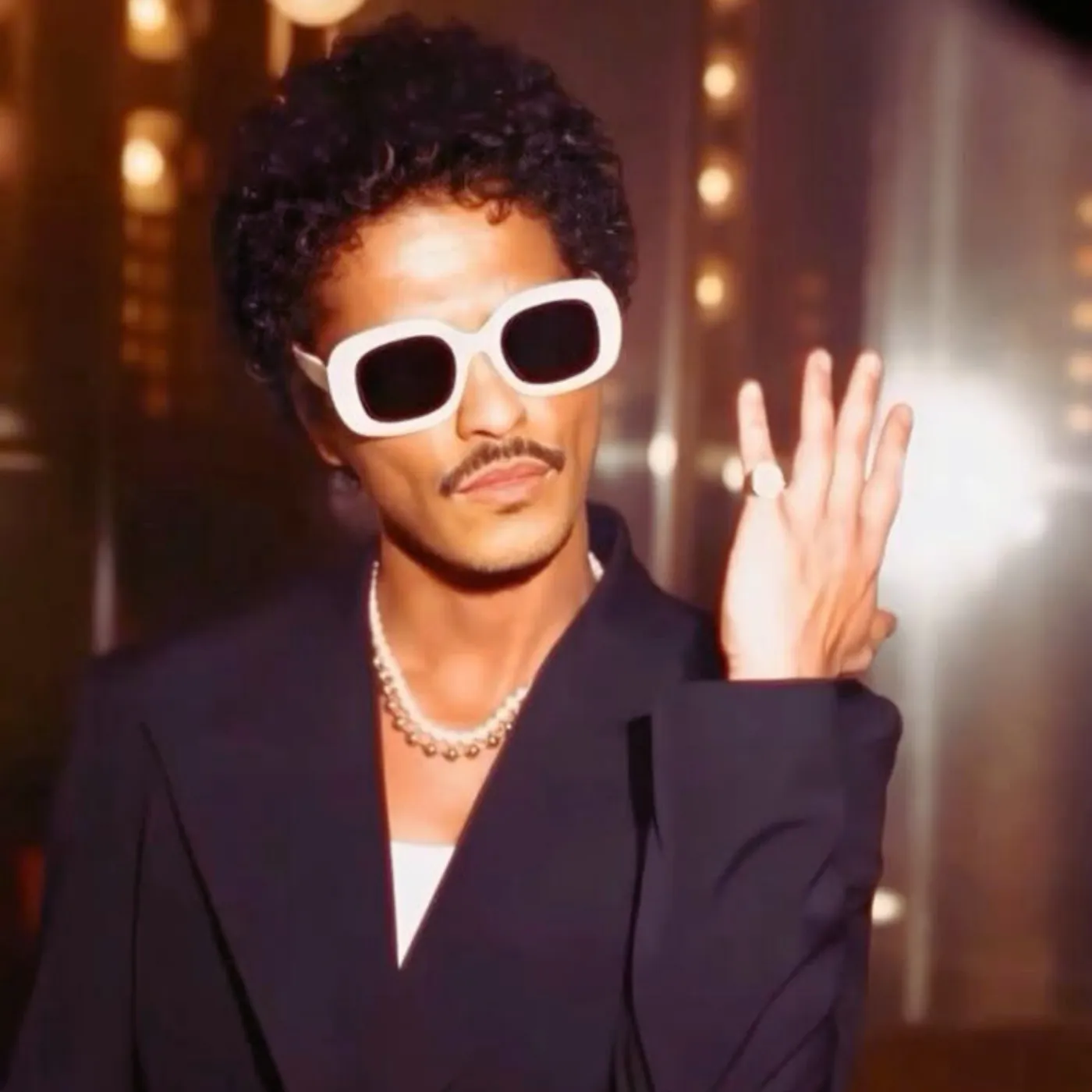

Bruno Mars Didn’t Just Drop Hits—He Engineered a Whole Vibe No One Can Steal
When you hear the name Bruno Mars, you don’t just think about songs—you think about vibes. About attitude. About a whole mood. Because in the crowded, ruthless world of pop music, Bruno Mars didn’t just crank out hits; he built a brand so strong it turned him into an untouchable icon of both music and style.

That didn’t happen overnight.
It didn’t even happen by accident.
It was engineered, step by step, album by album, suit by suit.
And if you want to understand how Bruno Mars went from a Hawaiian Elvis impersonator to a Grammy-dominating, style-defining, meme-generating force, you have to dig beneath the chart numbers and the red-carpet photos to see the calculation, the risk, the controversy, and the vision that made it all happen.
The Origins: A Hustler’s Bloodline
Bruno Mars was born Peter Gene Hernandez in Honolulu, Hawaii, to a family that literally lived for the stage.
Keyword: early influences
His dad ran a rock-and-roll revue. His mom was a hula dancer. Bruno was gigging before most kids could ride bikes. At age 4, he was on stage impersonating Elvis Presley with uncanny precision.
That old-school showmanship stuck.
He didn’t just want to sing. He wanted to perform.
To transform.
To control the room.
That obsession with craft is key to understanding how Bruno Mars would later conquer not just music charts but the style pages.
Failing in LA: The Lost Years
What many fans don’t know is Bruno Mars almost gave up.
After high school, he moved to LA, convinced he’d sign a record deal immediately. Instead, he spent years hustling behind the scenes.
He wrote hooks for other artists. He crashed on couches. He got dropped by a label that didn’t know what to do with a brown-skinned kid singing retro love songs in an era dominated by club beats and Auto-Tune.
Keyword: rejection
That period taught him two brutal lessons:
✅ The industry doesn’t reward you for talent alone.
✅ Image matters just as much as sound.
It would define everything he did next.
The Breakthrough: Retro with a Modern Edge
When Bruno Mars finally broke through with Doo-Wops & Hooligans in 2010, the music world was dominated by electronic production and rap features.
Bruno didn’t sound like anyone else on the radio.
He sounded old.
✅ Pianos.
✅ Doo-wop harmonies.
✅ Clean, heartbreak-heavy lyrics.
But it wasn’t just the music.
It was the look.
He wore tailored suits. Vintage-inspired hats. Perfectly styled hair.
He wasn’t trying to be the cool club bro.
He was the new crooner, with a mischievous smirk and dangerous charm.
It was an image as carefully crafted as the songs themselves.
Engineering the Icon Status: Every Detail Counts
Keyword: branding strategy
Let’s be clear: nothing about Bruno Mars’ brand was accidental.
Talk to his collaborators and they’ll tell you: he’s obsessive about details.
✅ Every lyric.
✅ Every note.
✅ Every wardrobe choice.
✅ Every music video frame.
When the industry zigged toward EDM drops and neon sneakers, Bruno zagged into Motown suits and live horn sections.
When pop stars courted controversy with social media overshares, Bruno went old-school: polished interviews, limited personal drama, an air of mystery that felt like Hollywood’s golden age.
It wasn’t just retro music.
It was retro class.
And people ate it up.
The “Uptown Funk” Effect
If Doo-Wops & Hooligans made Bruno a star, Uptown Funk made him a legend.
Produced with Mark Ronson, the song was a masterclass in musical nostalgia.
✅ ’80s funk.
✅ Shout-along hooks.
✅ Call-and-response choruses.
But here’s the trick: it didn’t sound dated.
It sounded fresh.
Bruno didn’t just imitate old styles. He updated them.
He made them meme-able.
He made them TikTok-friendly (before TikTok even dominated).
He made them viral.
And the music video?
That was a style manifesto:
✅ Matching suits.
✅ Perfect choreography.
✅ Bruno at the center, smirking like he knew he’d just stolen the world’s attention.

The Fashion Playbook: A Visual Brand
Keyword: fashion icon
Ask anyone what makes Bruno Mars stand out and they’ll mention the suits.
But it’s more than that.
He created a uniform.
✅ Retro sunglasses.
✅ Statement hats.
✅ Silk shirts unbuttoned just enough.
✅ Sneakers that cost more than most rent.
It was equal parts vintage Vegas lounge singer and modern streetwear king.
No one else looked like that on stage.
And crucially, it felt authentic.
Because it was Bruno.
He’d grown up studying those old-school showmen.
He believed in the power of that image.
The Marketing Genius of Consistency
One reason Bruno Mars became such an icon is because he understood branding better than almost anyone in pop.
✅ Consistent visuals across albums.
✅ Cohesive music videos.
✅ Concert tours with flawless production.
He built a world you could recognize instantly.
That consistency wasn’t boring—it was powerful.
Because fans knew what to expect:
✅ High-quality songwriting.
✅ Live-band energy.
✅ Aesthetic cohesion.
In an industry where so many artists chase trends, Bruno Mars built his own lane and owned it.
Controversy and Criticism
Here’s where it gets complicated.
Keyword: cultural appropriation
Some critics argue Bruno Mars is just repackaging Black music styles for mass (and often white) audiences.
They point to his borrowing from funk, soul, R&B, and reggae.
They question whether he’s giving enough credit to the pioneers of those sounds.
And they’re not wrong that Bruno Mars is a student of these genres.
But defenders argue he’s always cited his influences.
✅ James Brown.
✅ Prince.
✅ The Time.
✅ Elvis.
He’s transparent about his heroes.
And he doesn’t just borrow—he revives.
He hires live bands. He prioritizes musicianship.
He makes sure those sounds don’t disappear from the mainstream.
Is it controversial?
Sure.
But it also keeps people talking.
And in the era of social media, debate = engagement.
Live Performance: The Final Weapon
If you want to see why Bruno Mars is an icon, go to one of his concerts.
Or just watch the clips that go viral every time he tours.
✅ He doesn’t lip-sync.
✅ He doesn’t rely on backing tracks.
✅ He runs, jumps, dances, shouts—and stays in pitch.
He treats every show like a once-in-a-lifetime event.
His band, The Hooligans, isn’t window dressing.
They’re part of the brand.
They wear the suits. They hit the choreography. They deliver the energy.
It’s a show in the old-school sense.
And in an era where many pop stars perform over a laptop and call it a night, Bruno Mars’ commitment to live excellence sets him apart.
The 24K Magic Era: Peak Icon Status
When 24K Magic dropped in 2016, Bruno Mars didn’t just release an album—he cemented a lifestyle.
✅ Lyrics dripping with swagger.
✅ Production polished to perfection.
✅ Style that screamed luxury without feeling forced.
He didn’t just want to sell songs.
He wanted to sell an experience.
And fans bought it.
Tours sold out instantly.
The Super Bowl performance broke the internet.
Memes. Viral dance challenges. Endless think pieces.
He wasn’t chasing trends.
He was the trend.
Why the Style Works: Authenticity Meets Aspirational
Here’s the secret ingredient that makes Bruno Mars an icon instead of a caricature:
✅ He’s not pretending.
When he puts on that suit, he means it.
When he sings that old-school hook, it’s because he loves it.
When he performs live, he’s having the time of his life.
Audiences can spot a fake from miles away.
Bruno isn’t fake.
He’s performative, yes—but that’s not the same as inauthentic.
He loves this.
And that love is contagious.
A Carefully Controlled Image
Another underrated reason Bruno Mars became an icon?
He knows how to control the narrative.
✅ He doesn’t overshare online.
✅ He rarely feuds publicly.
✅ He keeps his private life locked down.
This old-school mystery lets people project onto him.
Fans see the smooth operator on stage and imagine what they want.
Journalists speculate endlessly.
Fashion blogs obsess over every outfit.
By giving just enough—but never too much—Bruno Mars keeps the world hooked.
The Legacy: A Playbook for Modern Pop Stars
So what’s the lesson here?
Keyword: music industry strategy
If you’re a new artist looking at Bruno Mars as the model, here’s what you should learn:
✅ Sound alone isn’t enough.
✅ Your look matters.
✅ Consistency beats trends.
✅ Live performance can’t be faked.
✅ Authenticity sells better than edginess-for-clicks.
Bruno didn’t become an icon by luck.
He studied the greats.
He respected the craft.
And he built a brand so strong that no one else can touch it.

The Final Word: Why Bruno Mars Stands Alone
It’s easy to dismiss Bruno Mars as just another pop star with catchy hooks.
But that misses the point.
He’s not just a singer.
He’s not just a songwriter.
He’s not just a sharp dresser.
He’s a visionary who understood from day one that in music, image is inseparable from sound.
He’s proof that you can honor the past while dominating the present.
And while others fumble with rebrands and genre-hopping desperation, Bruno Mars stays in his lane—because he built it.
That’s not just iconic.
That’s legendary.


















